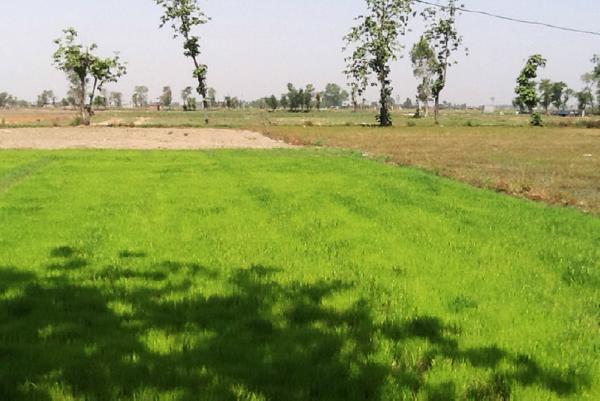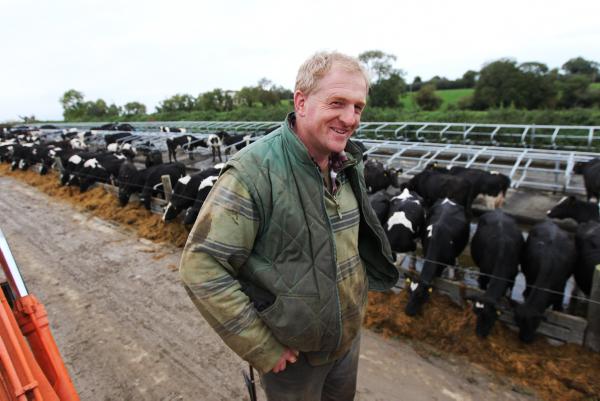India is a country of huge potential but right now it is striving for nutritional self sufficiency. This is the impression I am left with after spending the last ten days travelling through the country with nine other scholars as part of my Nuffield Global Focus Program.
We arrived in India on June the 1st as part of a six-week program that will see us travel on to Qatar, Turkey, France, the Netherlands and finally to the US where we will finish on July 10th. The aim of this program is to give the scholars a chance to see agricultural practices at first hand from around the world and to be able to exchange ideas with farmers from different countries.
Average farm size
With the average farm size just 2ha Indian agriculture works on a very local level with nearly all farm produce being sold within a 5-10km radius of where it is produced. Large scale agriculture is rare in India as land ownership per person is capped at 18 acres. Families can overcome this restriction by registering land in the name of other family members over the age of 18. However, 95% of Indian farms are less than 50 acres as average land prices are a whopping €50,000/acre and this alone makes land acquisition beyond the reach of all but the richest families.
Ramesh, our guide for five days in southern India, told the group that most Indians believe the official population statistics, that record the population as 1.3bn people, are grossly underestimating a population that is thought to be much closer to 1.5bn (a mere 200 million people short).
It is no wonder that India is far more concerned with feeding its own population than in becoming a major player on the global export market. To ever achieve any significant surplus there is a need for massive infrastructural development. There is little or no obvious evidence of any refrigeration or proper supply chains that would allow fresh produce to be transported any distances to market.
Transport
There is also significant investment needed into the road and rail networks to allow easy access to markets for farmers. There is potential though as seen on one relatively large scale dairy farm 40 cow dairy in India visited by the group which was milking 40 cows plus followers on 6ha at a stocking rate of 7 cows/ha.
We estimated that the farm was growing up 30 tons DM/ha with maize being harvested every 45 days and head height local grasses being cut every 30 days. The completely confined herd were being milked at 12am and 12pm, delivering 16-17 litres that was being packed into 1/2ltr bags and delivered to customers unchilled and unpasteurised within 4 hours of milking for the equivalent of 50c/ltr. Interestingly all the cows are bred to AI sires with Friesian and jersey cross bulls used.
Indian agriculture has moved forward a long way over the last 30 years with the adoption of irrigation and plant breeding technologies. This was very evident on one coconut grower’s farm, where he has improved his crop yield from the regional average of 120-150 coconuts/tree/year to between 250-300 nuts per tree per year. He has also
massively increased his overall production/acre by slightly reducing the planting density of coconut trees (from 75 to 52 trees acre) and then under planting them with nutmeg and cocoa trees.
Water
Water is a very valuable resource and though abundant enough in southern India, it's scarcity is felt much more acutely in other parts of such as the Punjab, in northern India. Here the growing of four crops a year (three wheat and one rice), with the aid of flood irrigation, is seeing the local ground water table dropping by half a metre a year, a situation which is recognised as being environmentally unsustainable but one which local politicians are reluctant to legislate for as restricting the use of water would be political suicide in a country where 65% of the electorate are involved in agriculture.
Paradox
Herein for me lie some of the paradox's of India. On the one side its a country of huge cultural diversity that could not have been more welcoming and hospitable to us and one that has a vast reservoir of untapped agricultural potential that exempts agriculture from all income taxes and provides free electricity to farmers in order to encourage farm sustainability.
Yet on the flip side it also restricts the importation of outside technology with high import tariffs that limits production advances. It's inherent lack of a good internal infrastructure, unreliable electricity, impending water shortages, food wastage along the supply chain of up to 40% and a surprising labour shortage on farms (due to internal migration to the cities in search of better jobs), for me all add up to the conclusion that India, with all it's potential is 30-40 years, behind the western world in its agricultural development.
I would like to take this opportunity to thank Nuffield Ireland and my sponsors, Dairymaster, LIC and The Peter Daly Trust for this opportunity to travel on this Global Focus Program.






 This is a subscriber-only article
This is a subscriber-only article














SHARING OPTIONS: